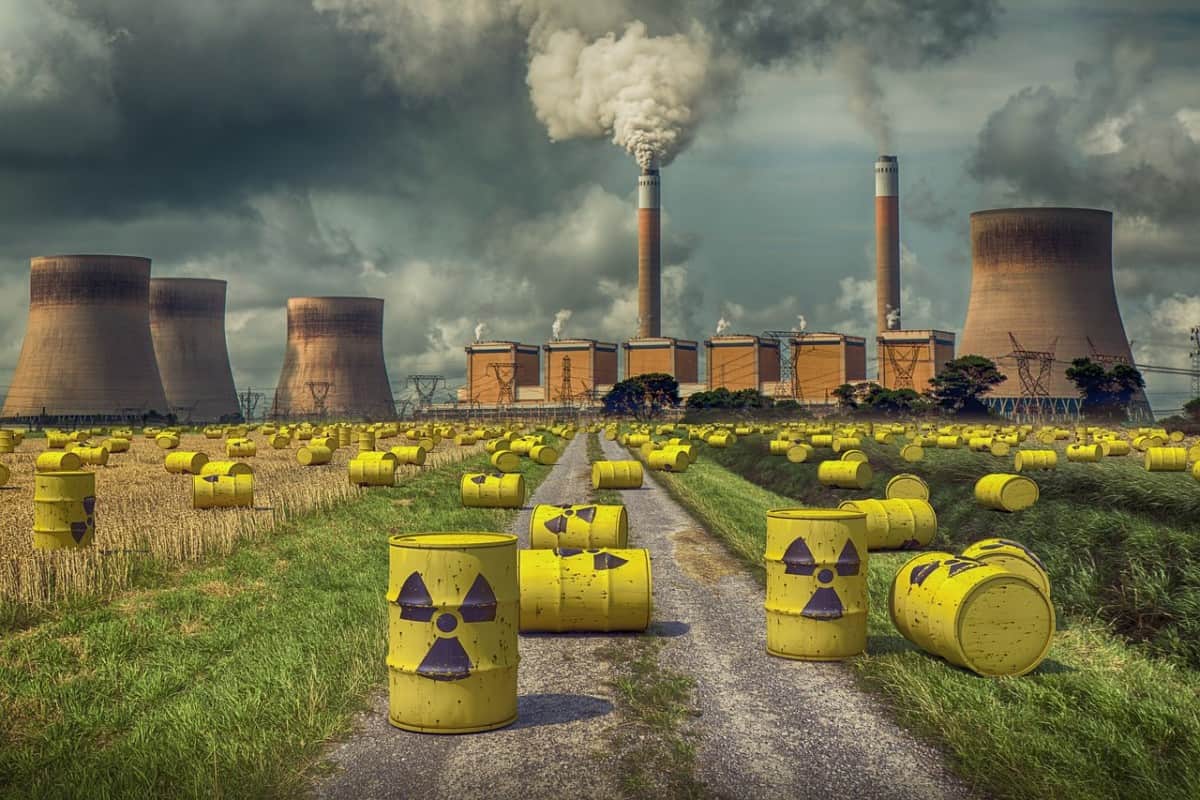Hydropower and nuclear power are the pillars of low-carbon electricity production.
When we hear the term “clean energy,” what first comes to our mind?
immediately we think of solar or wind power, but how many of us consider nuclear energy?
Yes, since nuclear power is the world’s second-largest source of low-carbon electricity after hydropower, it is frequently overlooked in discussions about “clean energy.”
So how sustainable and clean is nuclear power?
But we move there we want to know the types of Nuclear waste.
There are many different types of nuclear waste, and each presents unique management and disposal issues. Used nuclear fuel from reactors that contains very radioactive elements like uranium and plutonium is known as high-level radioactive waste, or HLW.
Reactor parts and contaminated instruments are examples of things that fall under the category of intermediate-level radioactive waste (ILW). They have a lower radioactivity but still need to be handled carefully.
Low-level radioactive waste (LLW) consists of items like clothing, gloves, and protective gear used in nuclear facilities with lower levels of radioactivity that necessitate controlled disposal.
Transuranic waste (TRU) is made up of elements heavier than uranium, such as neptunium and americium, and is produced during the manufacturing of weapons and nuclear power plants.
Lastly, mixed trash comprises both radioactive and hazardous chemical components, creating a combined challenge for effective disposal and treatment.
Managing nuclear waste is critical to an energy transition
Undoubtedly, tackling the issue of radioactive waste is essential to a prosperous energy shift. Because nuclear power can provide large amounts of energy with relatively low carbon emissions, it offers itself as a major actor in the global drive towards more sustainable and low-carbon energy sources. However, the handling and elimination of radioactive waste continue to be a crucial issue requiring careful thought and creative solutions.
One of the most significant challenges with nuclear waste is its long-term viability and potential for environmental and health hazards. Various radioactive elements created during nuclear operations have lengthy lifespans requiring safe storage for thousands of years to avoid damage to ecosystems and human health. It is critical to develop comprehensive solutions for the safe disposal and storage of nuclear waste to ensure a smooth transition to a sustainable energy future.
Geological repositories have emerged as a major possibility for long-term nuclear waste isolation. These repositories include burying garbage far below in geologically stable formations to reduce the chance of radioactive material reaching the surface and causing harm. Finland and Sweden have made headway in applying this strategy, demonstrating its viability and safety.
In addition to geological repositories, advances in nuclear technology can make a substantial contribution to tackling the nuclear waste problem. Innovative reactor designs and recycling technologies hold the promise of reducing the volume and hazard of nuclear waste. Certain advanced reactor designs may use nuclear waste as fuel, converting it into less dangerous byproducts. Recycling processes, such as reprocessing wasted fuel, can recover valuable materials for reuse while reducing total waste volume.
Tackling the global character of nuclear energy and waste management requires international cooperation. Exchanging best practices, research findings, and expertise may hasten the creation of feasible options and guarantee that nations adopt safe and uniform procedures for disposing of radioactive waste. Working together promotes a feeling of shared responsibility and helps in the development of trust amongst the countries taking part in the energy transition.
To influence laws and choices about nuclear energy and waste management, public understanding and involvement are equally important. Public knowledge and support for nuclear energy as a component of a diverse and sustainable energy mix is encouraged by open and honest communication about the dangers, advantages, and long-term plans for nuclear waste.
Tackling the issue of nuclear waste is critical as the world aims for a clean energy future. Investing in research and development of modern technologies as well as international collaboration and open communication with the public are all critical components of a complete plan for properly managing nuclear waste and facilitating a successful energy transition.
- About the Author
- Latest Posts
A passionate advocate for all natural and sustainable ideas. With a background in sustainable economics science and a deep love for nature, Sojy has dedicated his career to promoting eco-friendly practices and encouraging others to live a more sustainable lifestyle. He is an avid hiker, gardener, and cook, and loves experimenting with natural ingredients in his recipes and lifestyle routines. Sojy believes that small changes can make a big impact and is constantly seeking out new ways to reduce his carbon footprint and inspire others to do the same




